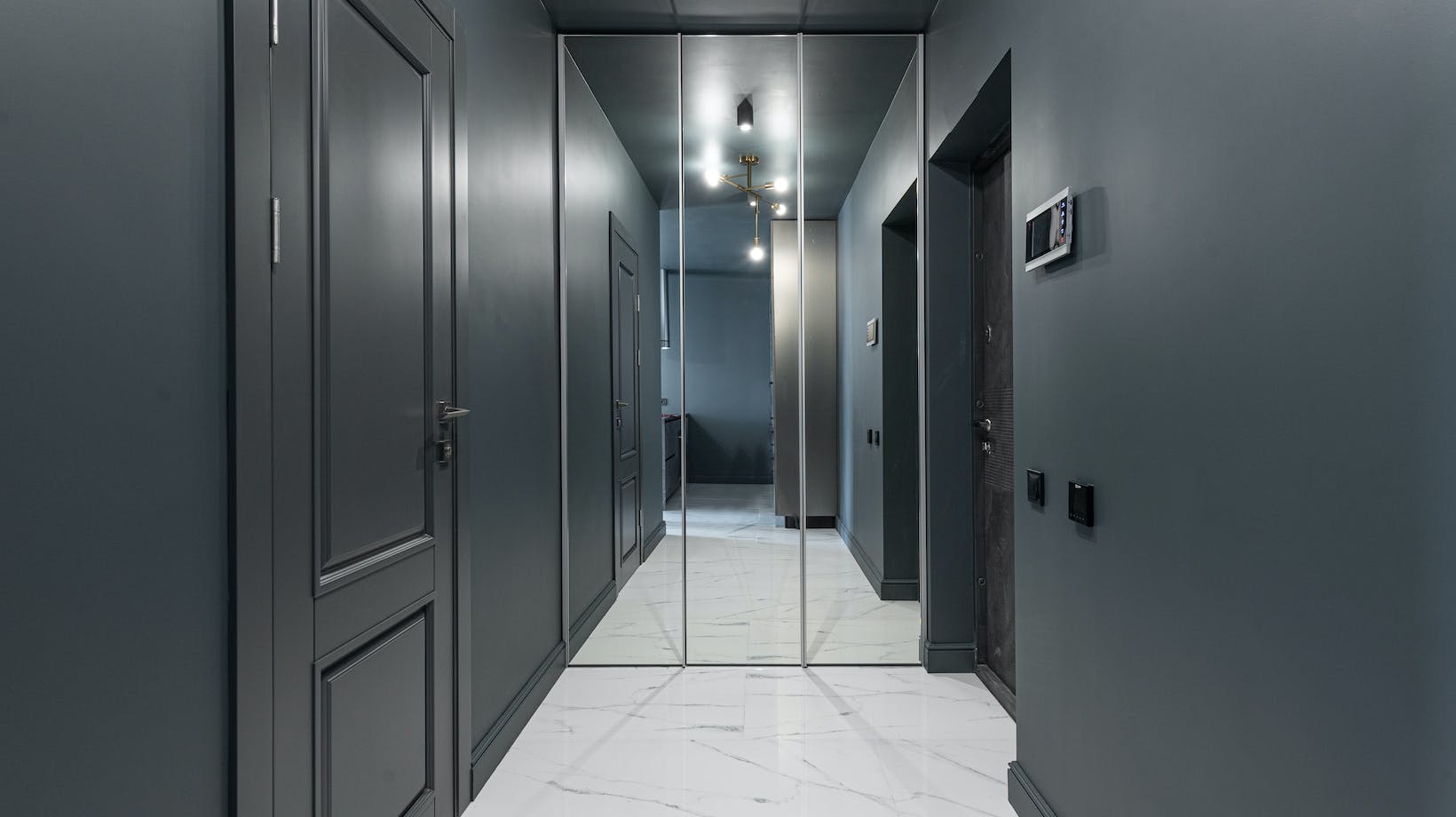
Gather materials
Before you dive into the preparation process, gather all the necessary materials. Having everything on hand will make the process smoother and more efficient. Here’s a list of what you’ll need:
- Drop cloths or plastic sheets to protect the surrounding area
- Painter’s tape to cover any areas you don’t want to paint
- Sandpaper (medium-grit) to smooth out the surface
- Tack cloth or microfiber cloth to wipe away dust and particles
- A mild detergent and warm water for cleaning the doors
- Primer suitable for the surface of your mirror closet doors
- Paintbrushes or paint rollers for applying the primer and paint
- High-quality paint suitable for mirror closet doors
- Optional: a paint tray or bucket for the paint
Once you have all the materials ready, you can move on to the next step.
Remove Doors from Hinges
To make the painting process easier, it’s best to remove the mirror closet doors from their hinges. This will allow you to work on them at a comfortable height and angle. Carefully unscrew the hinges and place the doors on a flat surface covered with a drop cloth or plastic sheet.
Sand the Doors
Sanding the mirror closet doors is an important step to create a smooth surface for the paint to adhere to. Use medium-grit sandpaper to gently sand the entire surface of the doors. This step will help remove any imperfections, rough areas, or old paint that might be present. Sand in a circular motion, applying even pressure, until the surface feels smooth to the touch. After sanding, wipe away any dust or particles using a tack cloth or microfiber cloth.
By following these preparation steps, you’ll ensure that your mirror closet doors are clean, smooth, and ready for painting. Remember, proper preparation is the key to achieving a professional and long-lasting finish. Now that your doors are prepped, you’re ready to move on to the next step: priming the doors.

Paint Mirror Closet Doors
Now that we have prepared the mirror closet doors, it’s time to move on to the exciting part – painting! This is where you can really transform the look of your closet doors and add a personal touch to your space. In this section, we will guide you through the steps of priming the doors, choosing a paint color, applying the paint, adding additional coats if necessary, and allowing the paint to dry.
Prime the Doors
Before applying the paint, it’s important to prime the doors. Priming helps to create a smooth and even surface for the paint to adhere to, ensuring a long-lasting and professional finish. We recommend using a high-quality primer that is specifically designed for the type of surface you are working with.
To prime the doors, start by ensuring that the surface is clean and dry. Use a clean cloth to remove any dust or debris. Then, using a brush or roller, apply a thin and even coat of primer to the entire surface of the doors.
Choose a Paint Color
Now comes the fun part – choosing a paint color! The color you choose will depend on your personal style and the overall aesthetic of your space. Whether you want a bold and vibrant color or a subtle and neutral tone, take the time to find a color that complements your decor.
When selecting a paint color, consider the lighting in your space. Natural light can affect how a color appears, so it’s a good idea to test a small area before committing to the entire surface. Remember that lighter colors can make a space feel larger, while darker colors can add depth and drama.
Apply the Paint
Once you have chosen your paint color, it’s time to apply it to the doors. Start by stirring the paint thoroughly to ensure an even consistency. If using a brush, begin by cutting in the edges and corners of the doors. Then, use a roller to apply the paint to the larger, flat surfaces. Work in small sections, applying the paint in thin and even coats to avoid drips and streaks.
Be sure to follow the manufacturer’s instructions for drying time between coats. If necessary, sand lightly between coats to create a smooth surface. This will help to achieve a professional-looking finish.
After applying the final coat of paint, allow the doors to dry completely. This is an important step that should not be rushed. Drying time can vary depending on the type of paint and the environmental conditions, so be sure to check the manufacturer’s instructions for guidance. Avoid touching or handling the doors until they are fully dry to prevent smudges or damage to the finish.





